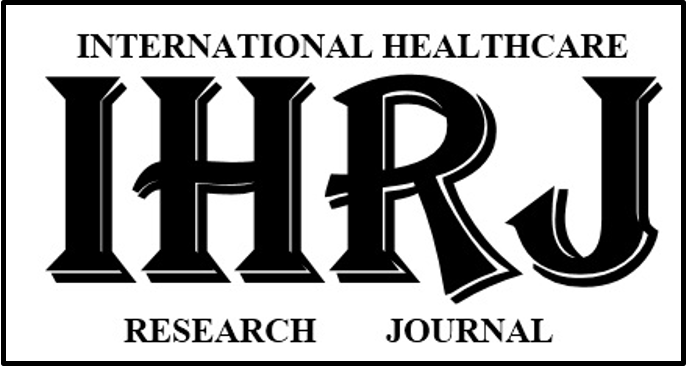Relationship of Personal Hygiene and BMI with OHI-S Scores among Primary School Children in a District in North India
Abstract
INTRODUCTION: Malnutrition, among children can lead to various morbidities, and some of its consequences can be fatal. AIM: To assess Hygiene with Nutrition & Morbidity among school children in district Ambala, Haryana, India. MATERIALS AND METHOD: Data was collected through a health check-up program for primary school children studying in class I and class III (aged only between 6-9 years) using a pre-tested and pre-designed questionnaire, weighing scale, measuring tape and dental screening instruments. The investigators were duly standardized and concerned instruments were duly calibrated. No names and personal information was collected and before the student was sent for examination, his I-card was removed. Data cleaned and analyzed using SPSS version 22.0. Shapiro wilk-test for data normalcy revealed a parametric distribution of the data and hence, the student’s t-test and multiple logistic regression were applied. RESULTS: The study included 216 males and 106 females, and the maximum unfavourable score (unclean hands, feet and skin) was observed in 40.1% of the children. Difference between favourable and unfavourable scores with OHI-S ≤2 was found to be 65.3% (p=0.02) and maximum students (68.9%), reported having a good favourable OHI-S score (p=0.01). It was observed that maximum males (43.1%) and females (48.1%) belonged to the “Normal” category of BMI, while lesser females (6.7%) were overweight in comparison to their male counterparts. Multivariate logistic regression revealed that OHI-S scores were significantly associated with BMI status (p=0.05) of the children, indicating that children with higher BMI scores have a tendency to have “fair” and “poor” OHI-S scores. CONCLUSION: Based on the results, appropriate measures can be undertaken to ensure that schools as well as healthcare professionals undertake more stringent measures to educate parents, children as well as teachers regarding the relationship between poor oral health and increased BMI values.
Downloads
References
Bagabaldo PAA, Bonifacio MRA, Layosa MAA, Cayetano AC, Africa LS. Relationship of Personal Hygiene Score with Sex, Nutritional Status, Morbidity, and Academic Grades Among Primary Grade School Children in a Public Elementary School in Pila, Laguna. Journal of Human Ecology 2020;9(1):33-46.
Kishor J. National health programs of India. In: Kishor J, eds. A Book. 2nd ed. New Delhi: Century Publications; 2007: 441-7.
Varu RB. School Health Services in India: The social and economic context, Sage Publications Pvt. Ltd; 2008. p. 1-2.
Deb S, Dutta S, Aparajita Dasgupta1, Raghunath Misra. Relationship of Personal Hygiene with Nutrition and Morbidity Profile: A Study Among Primary School Children in South Kolkata. Indian Journal of Community Medicine 2010;35(2):280-4. https://doi.org/10.4103/0970-0218.66894
Panda P, Benjamin AI, Shavinder Singh, Zachariah P. Health status of school children in Ludhiana city. Indian J Community Med. 2000;25(4):150-5.
Hung M, Moffat R, Gill G, Lauren E, Ruiz‐Negrón, B, Rosales MN, et al. Oral health as a gateway to overall health and well‐being: Surveillance of the geriatric population in the United States. Spec Care Dent. 2019;39:354-61. https://doi.org/10.1111/scd.12385
Dongre AR, Deshmukh PR, Garg BS. The impact of schoo health education programme on personal hygiene and related morbidities in tribal school children of Wardha district. Indian J Community Med. 2006;31:81-2.
Halder S, Kaul R, Angrish P, Saha S, Bhattacharya B, Mitra M. Association between Obesity and Oral Health Status in Schoolchildren: A Survey in Five Districts of West Bengal, India. Int J Clin Pediatr Dent. 2018;11(3):233-7. https://doi.org/10.5005/jp-journals-10005-1517.
Datar A, Nicosia N. Junk Food in Schools and Childhood Obesity. J Policy Anal Manage. 2012 Spring;31(2):312-37. https://doi.org/10.1002/pam.21602.
Rachmawati E, Carolina DN, Susanto A, Mustika I, Primarti RS. Correlation between Oral Hygiene Index-Simplified (OHI-S) and Various Body Mass Index (BMI) Among 6-8 Years Old Children in Bandung City. International Journal of Science and Research (IJSR) 2018;7(1):490-3.

Copyright (c) 2021 Faheem Bhatt et al.

This work is licensed under a Creative Commons Attribution-NonCommercial 4.0 International License.


